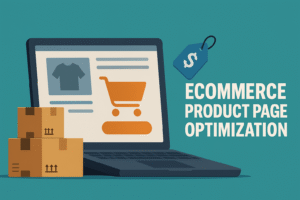Order fulfillment is the backbone of any successful ecommerce business. For Shopify store owners, ensuring that products reach customers promptly and accurately can make the difference between a loyal customer and a lost sale.
Yet, many stores encounter challenges in this area, leading to potential disruptions and dissatisfaction. Recognizing these challenges and implementing strategies to overcome them can significantly improve the shopping experience for customers and bolster a store’s reputation.
Let’s explore common order fulfillment errors and provide actionable solutions to prevent them, setting your Shopify store on the path to success.
The Landscape of Shopify Order Fulfillment
Shopify, as one of the leading ecommerce platforms, offers businesses a seamless way to set up and run their online stores. With its user-friendly interface and a vast array of features, it’s no wonder that thousands of entrepreneurs choose Shopify to bring their retail visions to life. But with the ease of setting up a store comes the responsibility of managing the order fulfillment process.
Order fulfillment is more than just sending out products to customers. It encompasses everything from inventory management and warehousing to packaging, shipping, and handling returns. Each step in this process has its own set of challenges and requires careful attention to detail.
For many Shopify store owners, especially those new to ecommerce, the intricacies of order fulfillment can be overwhelming. The process involves multiple stakeholders, including suppliers, warehousing facilities, and shipping carriers. Coordinating between these parties, ensuring timely deliveries, and maintaining inventory accuracy are just a few of the tasks store owners must juggle.
Furthermore, customer expectations have evolved. Today’s online shoppers expect fast, accurate, and reliable deliveries. A single misstep in the order fulfillment process can lead to negative reviews, returns, and lost customers. As such, understanding the landscape of Shopify order fulfillment is not just beneficial—it’s vital for the long-term success of any online store.
Common Mistakes in Shopify Order Fulfillment
Navigating the world of ecommerce, especially on a platform as expansive as Shopify, is no small feat. While the platform offers a plethora of tools to assist store owners, there are still pitfalls that many fall into when it comes to order fulfillment. Recognizing these mistakes early on can save businesses time, money, and the trust of their customers. Here are some of the most frequent missteps:
Inadequate Inventory Management
One of the primary challenges store owners face is keeping track of their inventory. Running out of stock can lead to delayed orders, while overstocking can result in wasted resources and storage costs. Utilizing Shopify’s inventory management tools or integrating third-party solutions can help maintain the right balance.
Ignoring Shipping Costs
Offering free shipping can attract customers, but absorbing these costs without a strategy can hurt profits. It’s essential to understand the shipping rates of different carriers and adjust pricing or offer tiered shipping options accordingly.
Overlooking Returns and Refunds
A clear and fair return policy is essential for building customer trust. However, not planning for the logistics of handling returns can lead to chaos. Ensure you have a system in place to process returns efficiently and communicate clearly with customers about the process.
Not Optimizing Packaging
Using oversized boxes or inadequate packaging materials can increase shipping costs and the risk of product damage. It’s essential to find the right packaging solution for each product to ensure safety and cost-effectiveness.
Lack of Communication with Customers
Keeping customers in the loop about their order status, from checkout confirmation to delivery, is crucial. Automated notifications, tracking information, and timely responses to queries can enhance the customer experience.
Not Reviewing Carrier Performance
Regularly evaluating the performance of your shipping carriers can help identify any recurring issues, such as frequent delays or damaged goods. Switching to a more reliable carrier or renegotiating terms might be necessary.
Failing to Plan for Peak Seasons
During holiday seasons or sales, order volumes can spike. Without proper preparation, this can lead to delays and unsatisfied customers. Forecasting demand and scaling operations accordingly is key.
By being aware of these common mistakes and actively working to avoid them, Shopify store owners can streamline their order fulfillment process, leading to happier customers and a more successful business.
The Implications of These Mistakes
While the intricacies of order fulfillment might seem like just one aspect of running a Shopify store, the repercussions of mishandling this process can be far-reaching. Understanding the potential consequences of these common mistakes can underscore the importance of getting it right. Here’s what’s at stake:
Customer Trust and Loyalty: Perhaps the most significant impact of fulfillment errors is on customer trust. When orders are delayed, incorrect, or damaged, it erodes the confidence customers have in a store. Over time, this can lead to decreased loyalty and repeat business.
Financial Strain: Mistakes in order fulfillment can quickly become costly. From refunding orders, reshipping products, to absorbing the costs of unsold overstocked inventory, the financial implications can be substantial.
Operational Inefficiencies: Without a streamlined order fulfillment process, operations can become chaotic. This inefficiency not only leads to mistakes but also requires more time and resources to manage, diverting attention from other critical areas of the business.
Brand Reputation: In the age of social media and online reviews, a single negative experience can be broadcasted to a wide audience. Consistent fulfillment errors can lead to a tarnished brand reputation, making it harder to attract new customers.
Lost Sales Opportunities: When potential customers hear about negative experiences or when products are consistently out of stock, they might choose to shop elsewhere. This results in lost sales opportunities and gives competitors an advantage.
Increased Operational Costs: Inefficient fulfillment processes can lead to higher operational costs. Whether it’s through wasted packaging materials, paying for expedited shipping to correct mistakes, or handling returns, the costs can add up.
Legal Repercussions: In some cases, especially when dealing with international shipping or specific product regulations, mistakes in order fulfillment can lead to legal issues. Ensuring compliance with all relevant laws and regulations is crucial.
Understanding these implications underscores the importance of a seamless order fulfillment process. While mistakes can happen, being proactive in addressing potential pitfalls and continuously optimizing the process can mitigate these risks.
Proactive Solutions and Best Practices
Addressing the challenges of order fulfillment requires a proactive approach. By implementing best practices and leveraging the right tools, Shopify store owners can optimize their fulfillment process, reduce errors, and enhance customer satisfaction. Here are some actionable strategies to consider:
1. Inventory Management Systems:
Modern inventory systems are a game-changer for Shopify store owners. They offer real-time data, allowing businesses to have an accurate grasp of their stock levels at any given moment.
This precision prevents the pitfalls of overselling and the dreaded backorders. Moreover, when these systems are seamlessly integrated with Shopify, stock levels are automatically updated on the store. This not only reduces manual input but also minimizes potential errors. And let’s not forget the importance of reorder alerts. By notifying store owners when stock levels dip low, they ensure timely restocking and prevent potential stockouts.
2. Clear Communication:
The moment a customer completes the checkout process, they should be greeted with a confirmation email detailing their order. This not only provides reassurance but also sets clear expectations. As the order progresses, automated notifications about the shipping status, including tracking numbers, keep the customer in the loop. And if there are any hiccups or delays, proactive communication can be the difference between a disgruntled customer and one who feels valued and informed.
3. Quality Control Checks:
Before any product leaves the warehouse, it should undergo rigorous quality control checks. This means inspecting products for any defects or damages and ensuring that the correct product variant is being shipped. Additionally, verifying the shipping address can prevent costly shipping errors and returns.
4. Training and Education:
A well-trained staff is the backbone of efficient order fulfillment. New staff should undergo a comprehensive onboarding process, ensuring they’re up to speed with the company’s standards. But learning shouldn’t stop there. Regular training sessions can introduce new best practices or update staff on changes in the process. And by fostering an environment where staff can provide feedback, businesses can tap into valuable insights for continuous improvement.
5. Leverage Automation:
Automation can be a time-saver. From quickly printing shipping labels to verifying and correcting shipping addresses, automated tools can ensure accuracy and efficiency. Plus, automated tracking systems benefit both the store owner and the customer, keeping everyone informed about the order’s status.
6. Flexible Shipping Options:
Shipping can make or break the customer experience. By clearly displaying the costs and estimated delivery times for each shipping option, customers can make informed choices. And for businesses with brick-and-mortar locations, offering in-store pickups can be a win-win, providing a convenient option for local customers.
7. Easy Return Process:
Returns are inevitable, but they don’t have to be a pain point. A clear and easily accessible return policy sets the stage. By offering prepaid return labels, businesses can simplify the process for their customers. And by clearly communicating the available options—be it a refund, store credit, or product exchange—businesses can ensure transparency and trust.
8. Regularly Review and Optimize:
Continuous improvement is key. By using surveys or feedback forms, businesses can gather direct insights from their customers. Regularly analyzing any errors or issues can highlight patterns and areas ripe for improvement. Review abandoned carts to make sure you haven’t developed an overly complex checkout process. And by always looking for opportunities to streamline, businesses can ensure their fulfillment process remains agile and efficient.
9. Build Strong Supplier Relationships:
Suppliers are pivotal partners. Regular check-ins ensure alignment in terms of expectations and capabilities. A strong relationship can also lead to better negotiation power, potentially securing better prices or faster shipping times. And by understanding the capabilities and limitations of suppliers, businesses can set realistic expectations, preventing potential issues down the line.
10. Plan for Peak Seasons:
Peak seasons, like the holidays, can be hectic. By anticipating higher demand and ensuring adequate stock levels, businesses can prevent stockouts. Sometimes, this might mean hiring additional temporary staff to handle the surge in order volume. And by clearly communicating last-order dates for specific holidays or events, businesses can manage customer expectations, ensuring no one is left disappointed.
Leveraging Third-party Fulfillment Partners for Shopify Stores
In the ever-evolving ecommerce landscape, many Shopify store owners are recognizing the value of partnering with third-party fulfillment centers. These partners can handle the complexities of order fulfillment, allowing businesses to focus on growth and customer engagement. Here’s why considering a third-party fulfillment partner might be a game-changer for your Shopify store:
Scalability: One of the primary advantages of third-party fulfillment centers is their ability to scale with your business. Whether you’re experiencing a sudden surge in orders or expanding your product range, these centers have the infrastructure to handle increased demand without hiccups.
Expertise: Fulfillment centers specialize in logistics and order processing. Their teams are trained to handle, store, and ship products efficiently, ensuring that orders reach customers in perfect condition and on time.
Cost Savings: By outsourcing fulfillment, businesses can often reduce overhead costs. There’s no need to invest in warehousing, staff for order processing, or advanced shipping software. The bulk shipping rates that large fulfillment centers negotiate can also lead to significant savings.
Geographical Reach: With fulfillment centers often having multiple locations, it’s easier to ship products worldwide. This can lead to faster shipping times and a broader customer base.
Advanced Technology: Many third-party fulfillment centers utilize cutting-edge technology for inventory management, order tracking, and reporting. This tech integration can provide valuable insights into sales trends, inventory turnover, and customer preferences.
Custom Packaging: Some fulfillment partners offer custom packaging services, allowing brands to maintain a consistent and branded unboxing experience for their customers.
Returns Management: Handling returns can be a logistical challenge. Fulfillment partners often have systems in place to manage returns efficiently, ensuring that customers receive refunds or exchanges promptly.
Focus on Core Business Activities: With the logistics handled by experts, Shopify store owners can redirect their focus to marketing, product development, and other core business activities.
Risk Management: Storing all products in one location can be risky, especially in the event of natural disasters or unforeseen incidents. Distributing inventory across multiple fulfillment centers can mitigate these risks.
Environmental Benefits: Some fulfillment centers prioritize sustainable practices, from eco-friendly packaging to energy-efficient warehousing. Partnering with such centers can enhance a brand’s commitment to sustainability.
For Shopify store owners, the decision to partner with a third-party fulfillment center should be based on their business needs, order volume, and growth projections. It’s essential to research and choose a partner that aligns with the brand’s values and can deliver the level of service that customers expect.
Final Thoughts on Perfecting Shopify Fulfillment
Order fulfillment is more than just getting products from point A to point B. It’s a reflection of a Shopify store’s commitment to its customers, showcasing reliability, transparency, and a dedication to excellence. As ecommerce continues to evolve, so do the expectations of consumers. They seek not only quality products but also an impeccable shopping experience, from the moment they click “buy” to the unboxing of their purchase.
Mistakes in order fulfillment can tarnish a brand’s reputation, leading to lost customers and missed opportunities. However, by recognizing common pitfalls and proactively implementing best practices, Shopify store owners can elevate their fulfillment process, ensuring it becomes a strength rather than a liability.
In the dynamic world of ecommerce, continuous improvement is key. By regularly reviewing, refining, and optimizing their order fulfillment strategies, businesses can stay ahead of the curve, ensuring they not only meet but exceed customer expectations. And in doing so, they lay the foundation for lasting customer loyalty, repeat business, and sustainable growth.
Remember, every order fulfilled is an opportunity to make a lasting impression. Make it count.









